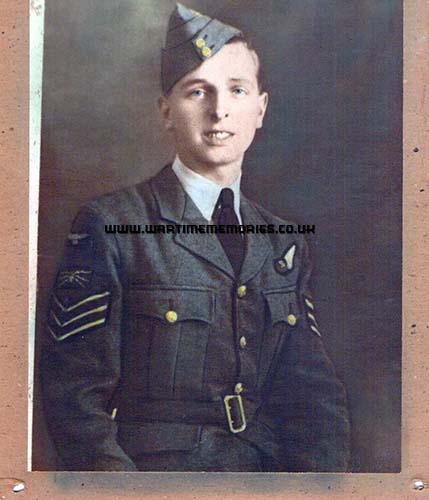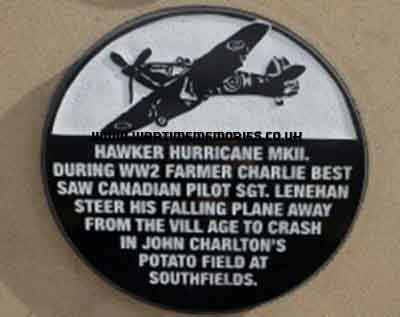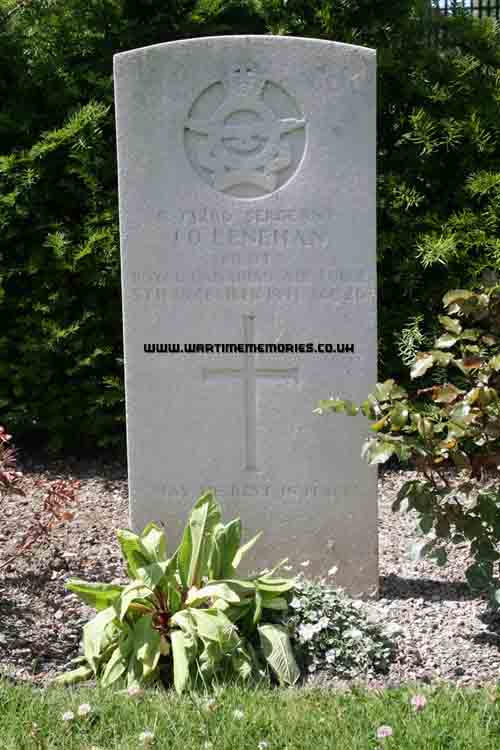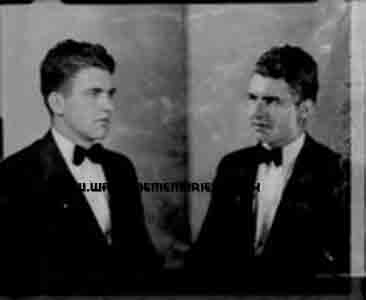|
|
|
RAF Usworth
The airfield started life in October 1916
as a Flight Station for 'B' Flight of No. 36 squadron
and was originally called Hylton or West Town Moor.
With the ending of the first world war the area returned
to non-flying use.
In the early 1930`s construction of a new airfield began on the
site.
The new airfield had been designed to accommodate one
squadron of the recently expanded Royal Auxiliary Air Force.
This was to be No.607 (County of Durham) Squadron.
In September 1939 work was started on
laying two concrete runways. A new perimeter track was laid
along the airfield boundary with eight dispersal pens,
and thirty four hard standings for
single-engined fighters. New buildings were erected and
anti aircraft gun emplacements were installed.
Usworth was designated a Sector Fighter Station in No.
13 Group, Fighter Command and thus controlled the reporting
of all raids on the area. The work on the runways continued
into 1940 and was much hampered by severe frosts which delayed
the reopening for flying until the end of March 1940.
On August 15 1940, due to its role as a sector fighter station,
Usworth was singled out for a major Luftwaffe attack during
the Battle of Britain.
On 3 July 1962, RAF Usworth, was purchased by Sunderland Corporation
and reopened as Sunderland Airport.
The North East Aircraft Museum
was established at Usworth in 1975.
Usworth closed at 1500 GMT on May 31 1984, the site to given over
to Nissan for a new car factory. The RAF sent a Jet Provost to pay their last
respects and airport manager, Bob Henderson,
fired off a few shots from a Very pistol as the
flag was lowered.
Nissan decided to retain the large Lamella hangar
erected in 1929, for storage and garage facilities.
However the runways would be lost under the factory's vast
expanse.
Today the remaining buildings house the The North East
Aircraft Museum.
Squadrons stationed at RAF Usworth
- No 20 Initial Training Wing. Nov 1943
- No 31 Gliding School. Sep 1944 to Feb 1949.
- No. 43 Squadron 8 Sep 1940 to 12 Dec 1940
- 55 Operational Training Unit. Feb 1941 to April 1942.
- No 62 Operational Training Unit. April to June 1942.
- No: 64 Squadron. March to May 1940
- 416th Night Fighter Squadron (USAAF). 1943.
- 607 Squadron1939 and May to Sept. 1940 and Dec 1940 to Jan 1941.
- 776 Squadron Fleet Air Arm. March to July 1943
- No 2739 Squadron RAF Regiment. June to Sep 1944
- No 2759 Squadron RAF Regiment. June to Sep 1944
2nd September 1939 Move to France
5th Sep 1939 Guards
16th Nov 1939 Reliefs
29th Jul 1940 Patrols
15th Aug 1940 Eagle Day
8th Sept 1940 Return to the north
12th Dec 1940
24th March 1943 Postings
If you can provide any additional information, please add it here.
|
Those known to have served at RAF Usworth during the Second World War 1939-1945. - Barrow. Hector Jack . Sgt Pilot
- Bazin. DFC, DSO.. James Michael .
- Blackadder DFC. William Francis .
- Carr-Ellison T. R.T. .
- Craig. George Dudley . F/O
- Dixon Peter Henry . (d.3rd June 1940)
- Forster DFC.. Anthony Douglas . F/O
- Gore DFC. . William Ernest . (d.28th Sep 1940)
- Graham. J. . Sergeant (d.10th Feb. 1942)
- Griffiths M. . F/O
- Harris Ellen. Sgt.
- Hurley. . J. B.. Sgt
- Irving. Maurice Milne . (d.28th Sep 1940 )
- Kayll DSO.DFC.. Joseph Robert .
- Kinsey Dorreen.
- Lenehan John Donald . Sgt. (d.5th Dec 1941)
- Metherall William Jeffrey . Sgt
- Parnall Stuart Boyd . P/O
- Porter John . Sgt. (d.14th Feb 1942)
- Preucil. Augustin .
- Pumphrey Bobby .
- Richardson T. T. .
- Rogers. Lancelot Wolfram. Sgt.
- Scott. . Clifford . Sgt. (d.14th Feb 1942)
- Smith Launcelot Eustice .
- Smith Pearson Watson. LAC.
- Smith. Pearson Watson . LAC.
- Vick. James Anderson .
- Welford. Harry . PO.
- Whitty. DFC.. William Hubert Rigby . F/O
- Yates James Derek. Sgt.
- Yost John Watson.
The names on this list have been submitted by relatives, friends, neighbours and others who wish to remember them, if you have any names to add or any recollections or photos of those listed,
please
Add a Name to this List
|
|
|
The Wartime Memories Project is the original WW1 and WW2 commemoration website.
Announcements

- 1st of September 2024 marks 25 years since the launch of the Wartime Memories Project. Thanks to everyone who has supported us over this time.
- The Wartime Memories Project has been running for 25 years. If you would like to support us, a donation, no matter how small, would be much appreciated, annually we need to raise enough funds to pay for our web hosting and admin or this site will vanish from the web.
- 19th Nov 2024 - Please note we currently have a huge backlog of submitted material, our volunteers are working through this as quickly as possible and all names, stories and photos will be added to the site. If you have already submitted a story to the site and your UID reference number is higher than
264989 your information is still in the queue, please do not resubmit, we are working through them as quickly as possible.
- Looking for help with Family History Research?
Please read our Family History FAQs
- The free to access section of The Wartime Memories Project website is run by volunteers and funded by donations from our visitors. If the information here has been helpful or you have enjoyed reaching the stories please conside making a donation, no matter how small, would be much appreciated, annually we need to raise enough funds to pay for our web hosting or this site will vanish from the web.
If you enjoy this site
please consider making a donation.
Want to find out more about your relative's service? Want to know what life was like during the War? Our
Library contains an ever growing number diary entries, personal letters and other documents, most transcribed into plain text. |
|
Wanted: Digital copies of Group photographs, Scrapbooks, Autograph books, photo albums, newspaper clippings, letters, postcards and ephemera relating to WW2. We would like to obtain digital copies of any documents or photographs relating to WW2 you may have at home. If you have any unwanted
photographs, documents or items from the First or Second World War, please do not destroy them.
The Wartime Memories Project will give them a good home and ensure that they are used for educational purposes. Please get in touch for the postal address, do not sent them to our PO Box as packages are not accepted.
World War 1 One ww1 wwII second 1939 1945 battalion
Did you know? We also have a section on The Great War. and a
Timecapsule to preserve stories from other conflicts for future generations.
|
|
Want to know more about RAF Usworth? There are:8 items tagged RAF Usworth available in our Library There are:8 items tagged RAF Usworth available in our Library 
These include information on officers, regimental histories, letters, diary entries, personal accounts and information about actions during the Second World War. |
|
Sgt. Ellen Harris My mother was stationed at RAF Usworth during the Second World War. Her name then was Ellen Harris and she was 25 years old in 1939. She was a sergeant in the Catering Corps and she often talked about her friends and the good times she had on the base.
This is a photo of her at Usworth with her friends in the Catering Corps. She is pictured sitting bottom right. Does anyone know any other names in this picture?
|
Sgt Pilot Hector Jack "Raymond " Barrow. Hector Barrow served with 607 (County of Durham), 43 (China-British) and 213 (Ceylon) Squadrons. He was born in Isle worth, Middlesex, son of Alfred Hector Henry and Edith Ethel Barrow, joined the RAFVR (Royal Air Force Volunteer Reserve) in April 1939 as an Airman under training Pilot. He was called up on Sept 1 st 1939 and with training completed, he joined 607 Squadron at RAF Usworth in June 1940. In late July he was posted to 43 Squadron at RAF Tangmere and was attached to 6 Operational Training Unit (at RAF Sutton Bridge) for training from August 3 to August 24. He transferred on September 20 to 213 Squadron, which was also based at RAF Tangmere. On September 27 Barrow claimed a share in destroying a Bf 110. He was reported Missing following a Wing patrol with 602 Squadron over RAF Tangmere on November 28th. His aircraft Hurricane Mk l (RAF Serial Number V6691) was shot down by a Bf109 of JG51 at 15:10 into the sea off Bognor on 28th November 1940. Barrow s body was washed up on the French coast. He is buried in Colleville-sur-Mer Churchyard, Calvados, France. He was 21 when he died. Hawker Hurricane Mk I V6691 was one of 500 delivered between August 1940 and January 1941 by Gloster Aircraft, Hucclecote, to Contract No. B.85730/ 40. Serving with 213 Squadron it would have been coded AK-? (? indicates that the individual code letter is unknown). This aircraft had previously served with 253 Squadron.
|
Dorreen Kinsey    I joined up at the end of 1940 and in 1941 became W.A.A.F Doreen Kinsey plus service number, hoping to see new and interesting places. I was sent to Bridgenorth where I was kitted out medicated and then moved on to Morcambe to begin basic training plus lots of jabs, all very exciting. After a month on the prom learning the correct way to Salute, March, including turning the "right" way , and several necessary things I was posted to Usworth, at a few were miles out side of Sunder land, in other words back home. Not for me the fun and games - I was billeted at home and provided with a bike. This meant I had to travel 12 miles each morning to be on camp by the 8 o'clock, roll call! I it was attached to Technical Services in a hut on the edge of the aerodrome which was home to the Anson training planes for Canadians etc. to have training in a of course, but not to flirt with I can assure you! Having undergone my own training, office work plus Gas training - I was at last a W.A.A.F.
I spent 10 months at Usworth and then off I went onto a radio course at Stafford, two weeks there then off to Fighter Command at Kenley in Surrey - things I thought were looking up! I was attached to Admin and spent almost two years there. May I say happy times between the lulls of air raids etc. I met my twin Dorothy, same birthday and year-and we became very close. We celebrated our 21st birthday in London at the Corner House and ducking for cover later on our way back to Kenley.
I took my exams at Biggin Hill and rode behind a dispatch rider delivering batches of I D cards - which of course was just not done - but it was! Towards D. Day great things were happening and I was posted further down the country to Durrington, near Worthing. We were billeted in three houses which had been built at the beginning of the war at the edge of its very large field with quite a few hens, source unknown, who delicately laid away in the long grass and gave us girls many a nice extra tea. Days off work were spent in Brighton sipping Pink Gin if we were lucky and we always had the boys to take care of us and see us across the field back to billets. D. Day came and we of course saw the build up down the country lanes which were full of Tanks, Lorries and "men" and I saw the planes and gliders by the hundreds, all very young men up there and us down on the ground saying our prayers. Then demob and up to Greenlaw in Scotland to become a civvy again. I married my husband on St Valentine's Day 1945 he had just returned from his war in South Africa - very different war to mine but he was an R.A.F. Engineer servicing battered aircraft so that they could be returned to service in the Middle East as soon as possible.
I am a member of the W.A.A.F. Association and I am proud of myself and my friends and my heart lifts and a tear is shed on Remembrance Day. How I would love to swing my kilt with the rest of them in Whitehall, but I'll be there in my heart.
|
Sgt. John Porter (d.14th Feb 1942) Amateur historian wins right:The Northern Echo: Friday 15 September 2000 Nearly 60 years after a shocked schoolboy witnessed one of the saddest accidents of Britain's war in the air, he has won the right for two brave pilots to be commemorated. Harry Spence was just 13 when he looked on in grim fascination as two RAF Hurricanes collided in mid-air on Valentine's Day, 1942, hurtling to the ground near his home in Tudhoe Colliery, near Spennymoor, County Durham.
Like others who watched the tragic spectacle, Harry believes that the pilots saved their community from disaster by sacrificing their lives to fly their planes clear of Tudhoe's pit cottages and shops. At 22, one of the pilots, John Porter, was already a sergeant at RAF Usworth, near Sunderland, and taking part in a mock dog fight in the skies near his home village of Brandon, County Durham. As he flew into one of the most complex manoeuvres of the exercise, coming towards him was a second Hurricane from Usworth, in the hands of 26-year-old Sergeant Clifford Scott, married with a young daughter, and a member of the Canadian RAF. Now the courage of both men will be recorded on a plaque to be placed by Spennymoor Town Council in Tudhoe Cemetery. Harry, 72, a keen amateur historian, came up with the idea as a tribute to the heroes of the skies. He still remembers vividly the Saturday morning of the crash. Despite their sense 0of horror, he and his friend Harold Kirkup ran to where one of the aircraft fell and burst into flames, yards away from their homes. Harry said: "We ran towards the pilot, but, of course, we could do nothing. We heard him say his prayers and then he died. I found one of his flying boots in a nearby gully, full of water." Villagers found an old door and used it as a makeshift stretcher to carry the pilot's body away. Harry added: "The pilot stayed in his plane until the last possible moment after avoiding the houses. They were both flying away from the village." Three years ago, one of Harry's colleagues in the Spennymoor and District Local History Society, former fighter pilot Bill Fleming, laid a wreath at Tudhoe's war memorial in memory of the lost fliers
|
Sgt. Clifford Scott. (d.14th Feb 1942) Amateur historian wins right:The Northern Echo: Friday 15 September 2000 Nearly 60 years after a shocked schoolboy witnessed one of the saddest accidents of Britain's war in the air, he has won the right for two brave pilots to be commemorated. Harry Spence was just 13 when he looked on in grim fascination as two RAF Hurricanes collided in mid-air on Valentine's Day, 1942, hurtling to the ground near his home in Tudhoe Colliery, near Spennymoor, County Durham.
Like others who watched the tragic spectacle, Harry believes that the pilots saved their community from disaster by sacrificing their lives to fly their planes clear of Tudhoe's pit cottages and shops. At 22, one of the pilots, John Porter, was already a sergeant at RAF Usworth, near Sunderland, and taking part in a mock dog fight in the skies near his home village of Brandon, County Durham. As he flew into one of the most complex manoeuvres of the exercise, coming towards him was a second Hurricane from Usworth, in the hands of 26-year-old Sergeant Clifford Scott, married with a young daughter, and a member of the Canadian RAF. Now the courage of both men will be recorded on a plaque to be placed by Spennymoor Town Council in Tudhoe Cemetery. Harry, 72, a keen amateur historian, came up with the idea as a tribute to the heroes of the skies. He still remembers vividly the Saturday morning of the crash. Despite their sense 0of horror, he and his friend Harold Kirkup ran to where one of the aircraft fell and burst into flames, yards away from their homes. Harry said: "We ran towards the pilot, but, of course, we could do nothing. We heard him say his prayers and then he died. I found one of his flying boots in a nearby gully, full of water." Villagers found an old door and used it as a makeshift stretcher to carry the pilot's body away. Harry added: "The pilot stayed in his plane until the last possible moment after avoiding the houses. They were both flying away from the village." Three years ago, one of Harry's colleagues in the Spennymoor and District Local History Society, former fighter pilot Bill Fleming, laid a wreath at Tudhoe's war memorial in memory of the lost fliers
|
Sgt. John Donald Lenehan 55 Operational Training Unit (d.5th Dec 1941) John Leonean was born 3rd of July 1915 and served with 55 Operational Training Unit based at RAF Usworth in Sunderland in 1941. On the 5th Dec 1941 whilst flying over Pelton Co. Durham, Don was seen steering his Hawker Hurricane Mkll away from the village and crashing into a nearby potato field to avoid civilian casualties.
|
Sgt. James Derek Yates No.20 Initial Training Wing  .jpg) Derek Yates was my Grandfather and whilst training at RAF Usworth he met my Grandma, Elsie Wallace from Sunderland on an evening out pass. She and her friend were taking shelter from the rain in a shop doorway when they decided to make a run for it.
My grandmother stepped out first, but as she did she tripped up two passing RAF Sergeants in uniform sending one of them (my grandfather) to the floor in the wet wearing his best dress uniform! He got up cursing as you can imagine but was soon cut short by the steely eyed glare from my Grandma over his choice of language.
This turned out to be the start of their journey! My grandparents were happily married for 30 years settling eventually in a coal mining village called Blidworth in Nottinghamshire where Derek returned to the coal mines after the RAF as a Mechanical Engineer until sadly he passed in October 1978 from a heart attack. Elsie continued to raise me until she passed in 1991.
By the time of my Granddad's passing though I had been privileged to have grown up to the age of 10 listening to their stories and adventures during the War and service in the RAF. This had made such an inspirational impression that at 17 I enlisted and served for 20 years myself in memory of Granddad Derek Yates (Sgt) Royal Air Force.
|
LAC. Pearson Watson Smith No. 56 Operational Training Unit My father, Pearson Smith (born 1920), was from Sunniside, Newcastle-upon-Tyne, and enlisted in the RAF on 21st of November 1940 at Padgate. He initially mustered as an ACH/W.Op., then became an ACH/GD, and finally a Maint/Asst. He was demobbed on 15th of July 46 at RAF Cardington, Bedfordshire, having reached the rank of LAC.
He went to 10 Signal Recruit Centre, Blackpool, in Feb 41, then moved to No. 3 Signals School (RAF Compton Bassett, Jun 41), 51 OTU (RAF Cranfield, Aug 41), 55 OTU (Oct 41 and Mar 42, RAF Usworth and RAF Great Orton), 16 RC(A) (May 42), hospital at RAF Kirkham (Jul - Aug 43), 56 OTU (RAF Brunton, Jan 45) and No. 95 Maintenance Unit (RAF Lords Bridge, Cambridge, Sep 45) before demobbing at RAF Cardington (102 PDC 'A') on 25/5/46.
He also did several 'Alt Backers Up' courses, though it's not clear from his service record what these were. However, an article on the BBC website WW2 People's War may shed some light on this as the correspondent says ‘The Backers Up’ course consisted mostly of football, arms drill, firing on the rifle range, route marches and physical training.
The only other possibility is that, as the term 'Backers Up' was used by the Pathfinder Force to describe crews whose job was to add coloured markers to target flares to maintain the aiming point during a raid, is that he may have started as a maintenance assistant on radios but later changed to explosive ordnance, hence how he came to be at 95 MU. I think this unlikely as he joined 95 MU after the war ended and prior to that had been at OTUs, none of which had aircraft used by the Pathfinder Force.
I never met my father, as my parents separated when I was a child and he died in 1992. I would be interested in any stories or information about the places he served, especially at the time he was there, and also about the 'Alt Backers Up' courses mentioned on his Service record, as well as information about 16 RC.
Notes:
- RAF Compton Bassett was a training establishment for ground trade radio operators and radio mechanics.
- 51 OTU at RAF Cranfield (Bedfordshire) in 1941 operated the Beaufort, Mosquito, Wellington, and Hurricane.
- 55 OTU at RAF Usworth (Co. Durham) in 1941 operated the Hurricane X.
- 16 RC (A) - no information, but possibly 16 Radio Course, location unknown; the 'A' denotes attachment to 55 OTU as parent unit.
- 55 OTU at RAF Great Orton (Cumberland) in 1942 operated the Hurricane, Typhoon and Master.
- RAF Kirkham (Lancashire) was the main armament training centre for the RAF from Nov 1941 and had a military hospital, probably the closest one to RAF Great Orton where Pearson was based at the time.
- 56 OTU at RAF Brunton (Northumberland) in 1945 operated the Typhoon 1b and Tempest.
- RAF Lords Bridge in 1945 was an Air Ammunition Park and Forward Filling Station for mustard gas munitions.
- RAF Cardington (Bedfordshire) in 1946 was a Personnel Despatch Centre (for demobilisation). The 'A' denotes 'A Class' demobilisation category.
|
Recomended Reading.Available at discounted prices.
|
|
|













.jpg)

